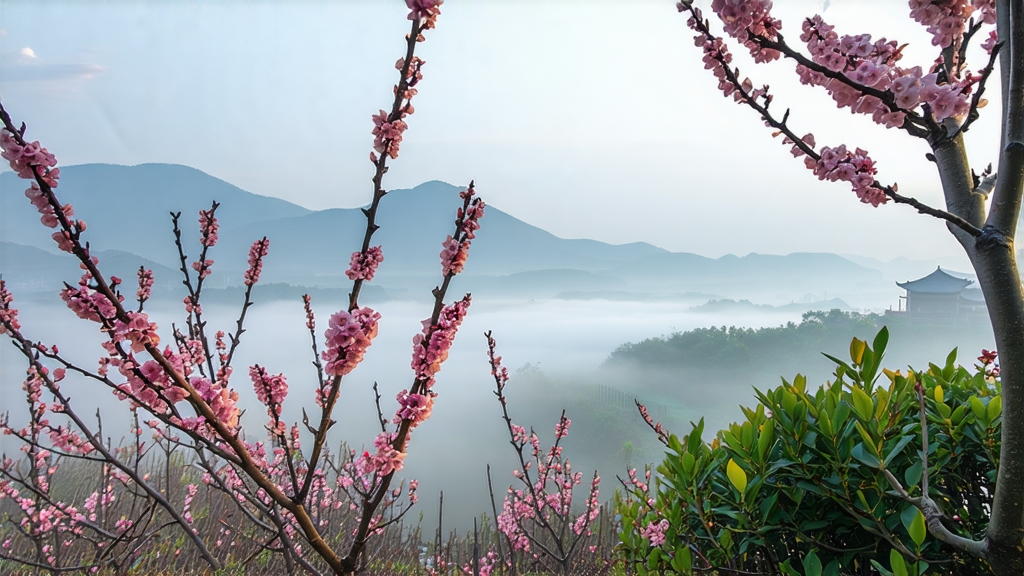
Biluochun, whose name translates literally to “Green Snail Spring,” is one of China’s ten most celebrated teas, yet it remains curiously under-represented on Western tea menus. Produced only in a micro-zone around Dongting Mountain at the center of Lake Tai near Suzhou, this tea carries within its tightly spiraled leaves the perfume of apricot, peach, and the mountain’s own wild orchids. To understand Biluochun is to glimpse the Chinese conviction that geography, history, and human touch can be infused into a single cup.
Historical records first mention the tea during the late Tang dynasty (ninth century), but its modern fame began in 1699 when the Kangxi Emperor visited the region. Court chroniclers relate that the emperor was presented with a small jar of unusually fragrant leaf. Struck by its “scary” aroma—so potent it was said to startle the palace cats—he renamed the tea from its rustic moniker “Xia Sha Ren Xiang” (“Scary Fragrance”) to the more elegant Biluochun. From that moment the leaf became a tribute tea, shipped north along the Grand Canal to Beijing each spring before the Qingming festival.
Strictly speaking, only leaf picked within a 5-kilometer radius of two peaks—Dongshan (East Mountain) and Xishan (West Mountain)—qualifies as authentic Biluochun. The plants grow on terraced slopes of weathered quartzite mixed with lake sediment. Morning mist rising from Lake Tai slows photosynthesis, forcing the bush to accumulate amino acids that later translate into sweetness. Between the rows of tea, fruit trees—peach, plum, apricot, and loquat—are interplanted; their blossoms drop petals that decompose into the soil while their roots share mycorrhizal fungi with the tea shrubs, adding layers of floral complexity impossible to replicate elsewhere.
The cultivar itself is a small-leaf Camellia sinensis var. sinensis locally called “Xiao Ye Zhong.” Its diminutive leaves are ideal for the fine twisting that defines Biluochun’s silhouette. Buds are plucked at the “single spear, one leaf” stage—still tender enough to snap cleanly yet mature enough to deliver flavor. Picking begins when overnight temperatures stabilize above 10 °C, usually between the Ides of March and April 10. Experienced pluckers work barefoot to feel the soil warmth, believing it predicts the day’s leaf quality.
Withering is done outdoors on bamboo mats for no more than 30 minutes; the goal is to evaporate surface moisture without oxidizing the leaf. Next comes kill-green, the high-temperature step that locks in greenness. In Biluochun’s case, the leaves are tossed into a wok pre-heated to 180 °C, then immediately cooled to 120 °C as the master’s palms press and roll. The motion is wrist-driven, a continuous spiral that gives the tea its signature curl. Because the bud tips are downy, they catch the light like miniature snail shells, hence the name. Rolling lasts 15 minutes and is interrupted three times for 30-second “breaths,” allowing internal moisture to migrate outward and preventing breakage. Finally, the leaves are dried in three passes: first at 70 °C to reduce moisture to 20 %, then 60 °C to 10 %, and a last gentle 50 °C bake that sets the aroma. Total processing time from pluck to finished tea is under four hours, one of the fastest turnarounds in green tea craft.
To brew Biluochun properly, one must respect its delicacy. Begin with soft water—TDS below 100 ppm—brought to 80 °C. A tall, thin glass is traditional in Suzhou teahouses because it permits the “dance of the snail”: when the water hits the leaf, the spirals unfurl slowly, sinking and rising in graceful arcs. Use 3 g of leaf for 150 ml of water; the first infusion lasts 45 seconds, just long enough for the buds to hydrate. Subsequent steeps add 10 seconds each; good Biluochun yields five inflections before its sweetness fades. Avoid covering the glass—aroma is part of the experience, and trapping steam can stew the leaf.
Professional cupping follows a tighter protocol: 4 g of leaf in a 150 ml white porcelain gaiwan, water at 85 °C, three infusions of 3, 4, and 5 minutes. The dry leaf should smell of fresh lychee and magnolia